Montana is home to the remarkable mountain goat, a symbol of rugged wilderness and natural beauty. These sure-footed creatures navigate the state’s steep, rocky terrain with grace. Our guide dives into the mountain goat’s history and unique characteristics.
We’ll explore where and how to observe these goats in the wild, emphasizing responsible wildlife watching. Finding the best locations and following some essential tips is important to avoid disturbing their natural routines. These tips will help you minimize your disruption to their environment.
We’ll also offer guidance on mountain goat hunting, covering regulations, population status, and preparation for a rewarding adventure. We’ll cover the details of obtaining a hunting license and the importance of sustainable hunting practices.
- Related article: Wildlife in Montana Guide
We aim to deepen your knowledge of Montana mountain goats, whether you’re a wildlife enthusiast, potential hunter, or just curious about these iconic creatures. Join us as we celebrate their unique beauty and resilience.
7 Key Takeaways on Montana’s Mountain Goats
- Montana’s mountain goats are exclusive to northwestern North America, with remarkable adaptability to diverse environments.
- Their history reveals a story of ancient migration, making them the sole representatives of their genus and species in the world.
- Recognized for their agility in steep terrain, mountain goats have a high natural mortality rate due to the challenges of their habitat.
- Wildlife-watching tips emphasize respecting these animals’ space and natural diet.
- Hunting mountain goats in Montana requires specific licenses and adherence to regulations that focus on herd sustainability.
- Hunting outfitters offer unique experiences, from backcountry adventures to landscapes where goats thrive.
- Observing mountain goats in national parks and rugged mountain areas of Montana can be a rewarding and memorable experience with proper preparation and care.
About Montana Mountain Goats
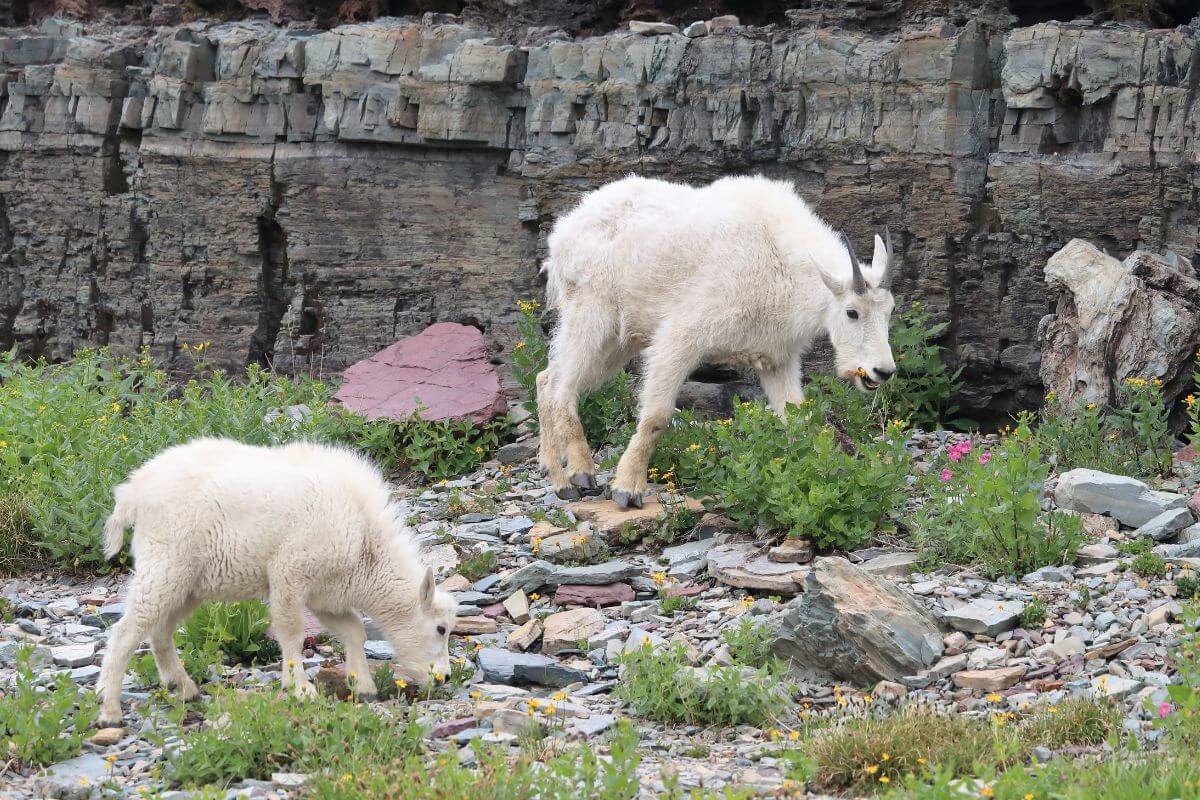
Montana’s mountain goats are true masters of the rugged, high-altitude landscapes they call home. These animals are not actually goats but are more closely related to antelopes. The story of the Montana mountain goat is one of survival in some of the state’s most challenging and breathtaking terrains.
Montana Mountain Goat History
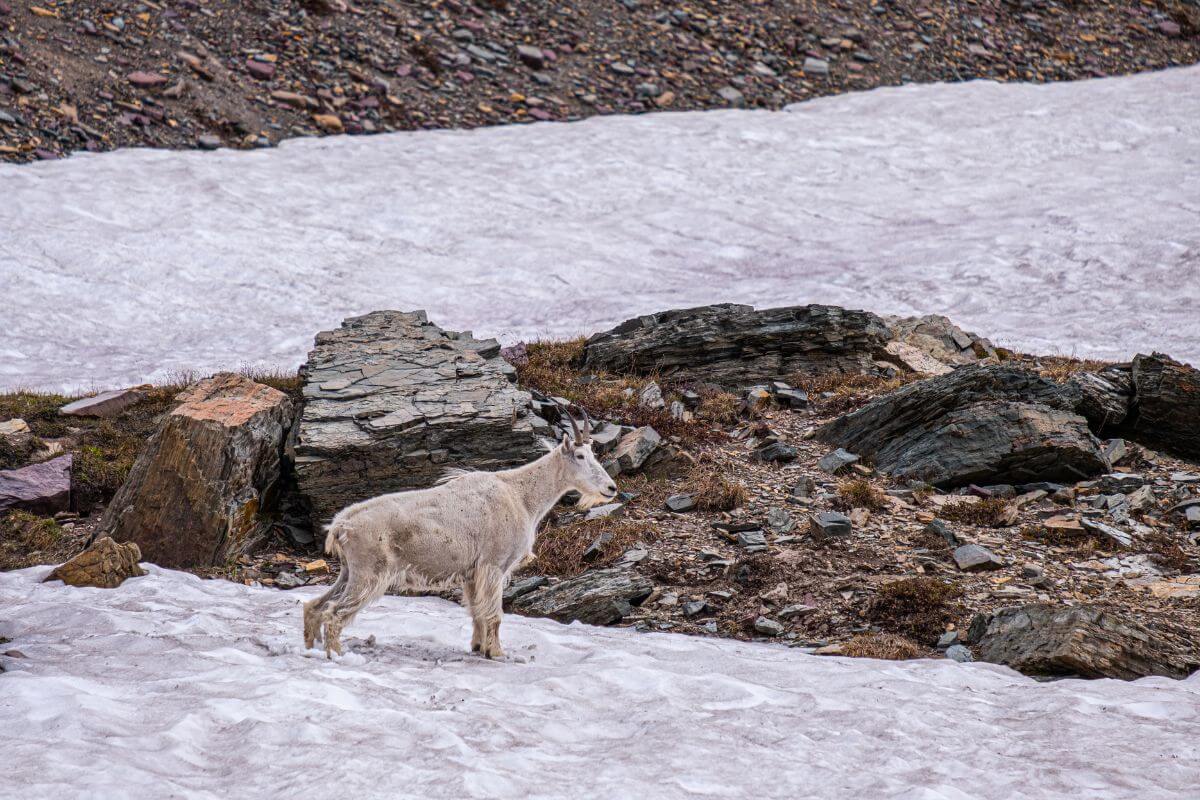
The history of Montana’s mountain goats is a tale of resilience and uniqueness. Like the pronghorn antelope, these creatures stand out for not having close relatives in the Americas. While the pronghorn is a native of North America, the mountain goat’s story is one of ancient migration.
Arriving in North America over 40,000 years ago, this goat left behind its family — the gorals, serows, and chamois of Asia and Europe. This makes the mountain goat (Oreamnos arnericanus) the sole representative of its genus and species worldwide.
Here’s what to know about the history of Mountain goats in Montana:
- North America Exclusive – Mountain goats are exclusive to northwestern North America, with Montana hosting native populations to the west of the Continental Divide and introduced populations to the east.
- Cliff-Dwellers – Mountain goats are known for their cliff-dwelling habits, which offer protection from predators. They also use dense timber and creek areas for safety and to regulate temperature.
- Remarkable Adaptability – Mountain goats are found at various elevations and exposures throughout the year, with some moving to snow-covered cliffs in winter and others to exposed ridges for foraging.
This history sheds light on the origins of these unique creatures and emphasizes their ability to thrive in diverse environments. It’s a story that adds depth to any wildlife enthusiast’s experience in Montana.
Montana Mountain Goat Characteristics
| Characteristic | Description |
|---|---|
| Coat | Mountain goats have a stunning white coat that is thick and soft, which provides insulation and protection. During winter, it lengthens, forming a beard under the chin and pantaloons around the front legs. |
| Horns | Mountain goats’ horns are black, smooth, sharp, and slightly curved. They can reach 8 to 10 inches long. |
| Tail | Mountain goats have tails with a few brown or black hairs. |
| Body | Mountain goat bodies are compact and chunky, and their legs are short. |
| Hooves | Mountain goat’s hooves are black with hard outer edges and soft centers for gripping rocks. |
| Weight | Mountain goat’s weight varies by sex and age, with old billies reaching 300 lbs or more and nannies about 150 lbs. |
The mountain goat is a remarkable creature perfectly adapted to Montana’s challenging mountain landscapes. This species is renowned for its agility in navigating steep and rugged terrain. This makes them a favorite subject for wildlife enthusiasts and photographers.
Due to its habitat’s difficulty, it also presents a significant challenge for game hunters. Here are some additional insights into the lives of Montana mountain goats:
- High Mortality Rate – Mountain goats face one of the highest natural mortality rates among large game animals. The combination of treacherous terrain and harsh weather makes survival a constant battle.
- Distinctive Names – Male mountain goats are called billies, while female goats are called nannies. This distinction is common in many species and helps identify the different sexes.
- Social Structure – Nannies, kids, and immature billies form herds, while mature billies are often solitary. Females hold dominance.
- Habitat and Diet – Mountain goats prefer precipitous terrain, steep slopes, and areas with snow cover. Their diet includes grasses, sedges, and lichens.
- Ecological Impact – Sensitive to overharvest and disturbances like logging, human activities affect the mountain goat population.
- Reproduction – Breeding occurs in late fall, with most females giving birth to a single kid. Mating among billies can be intense, leading to serious injuries.
Encountering a mountain goat in Montana is a true wildlife experience. Thriving in harsh environments and boasting striking physical features, they symbolize the state’s wild and beautiful natural landscapes.
Montana Mountain Goat Wildlife Watching Guide
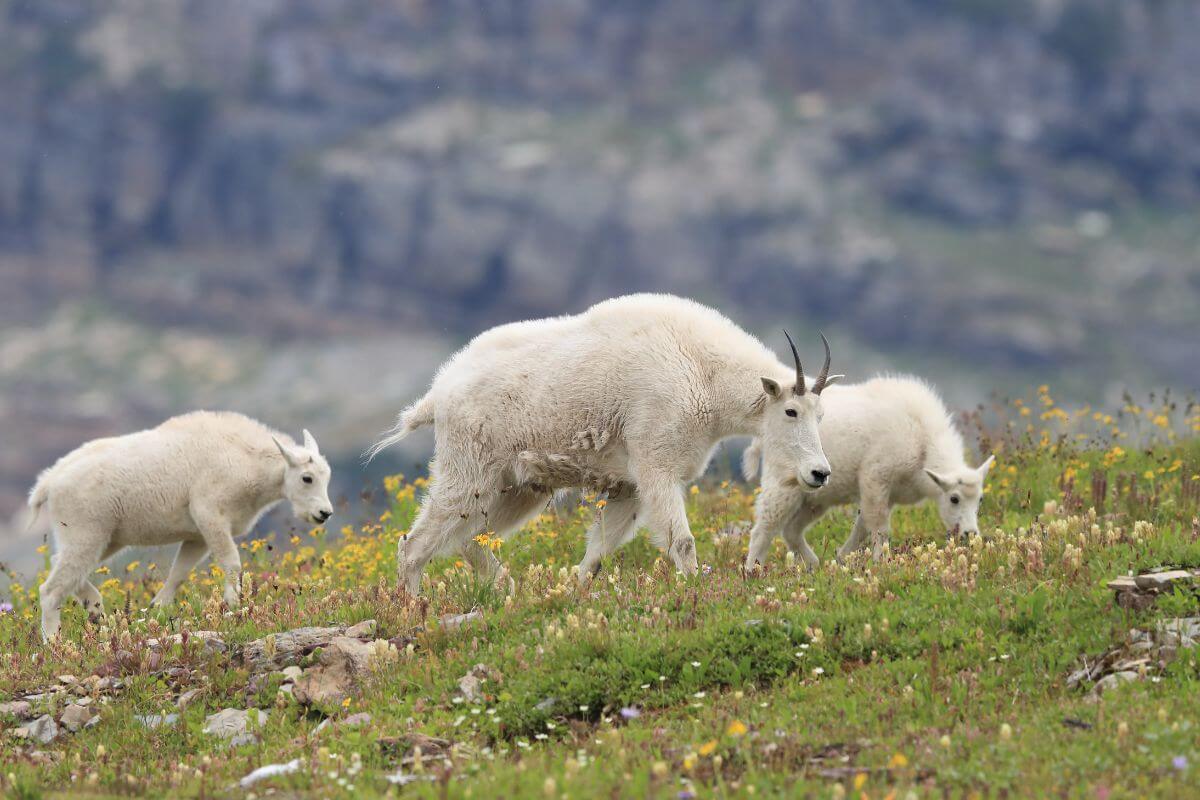
Mountain goats are some of the most incredible creatures you can see in Montana. This guide will help you get the best views of these sure-footed climbers and share tips to make your wildlife-watching experience unforgettable.
Let’s dive into the world of Montana’s mountain goats and discover how to observe them in their natural habitat.
Where to See Montana Mountain Goats
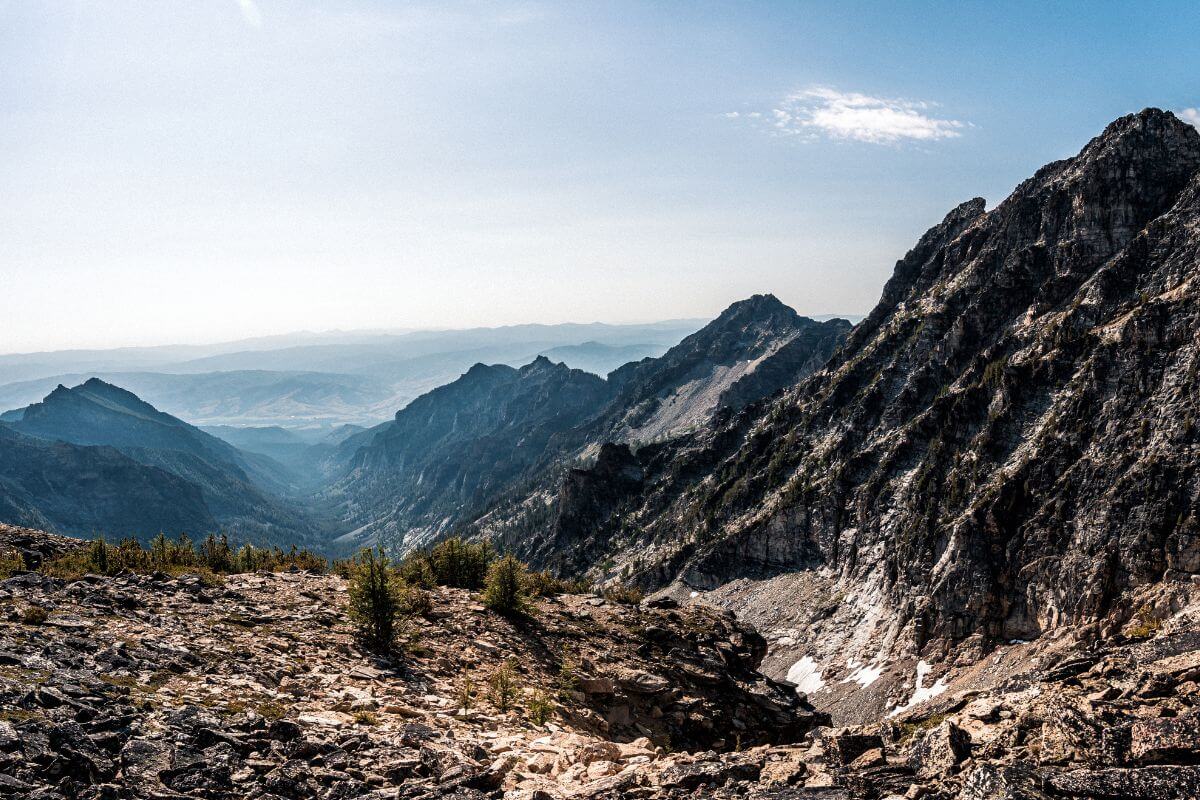
You must look up when you’re in Montana and want to see mountain goats. These amazing animals love the high places in the state, hanging out in rocky, mountainous areas. Montana is home to about 5,900 mountain goats, with 38% chilling in Glacier and Yellowstone National Parks.
Here are prime spots in Montana for catching a glimpse of the sure-footed climbers that are mountain goats:
- Glacier National Park – With a significant mountain goat population, Glacier National Park is a great place to see mountain goats. Despite their preference for high elevations, goats in Glacier are often spotted on the park’s trails.
- Yellowstone National Park – Descendants of goats introduced in the 1940s and 1950s now roam the northeastern and northwestern parts of Yellowstone National Park. There are around 200–300 goats here.
- Big Sky Resort – Surprisingly, you can see mountain goats while skiing at Big Sky Resort. Sometimes, ski patrol changes their routines to let the goats do their thing.
- Bitterroot Mountains – South of Missoula, the Bitterroot Mountains are home to more mountain goats. Due to the wild terrain, spotting them here might be a challenge.
- Big Belt Mountains – Close to Helena, a small goat community lives in the Big Belt Mountains. Tourists on boat tours through the Gates of the Mountains canyon might be lucky enough to see goats high on the canyon walls.
Observing Montana’s mountain goats in their natural habitat is a thrilling experience that requires patience and a keen eye. Consider visiting these popular spots to increase your chances of spotting these majestic creatures.
Montana Mountain Goat Hunting Tips
Watching Montana’s mountain goats is a unique and rewarding experience, but it comes with a responsibility to keep these amazing animals safe and wild. When you’re out in their territory, remember these tips:
- Keep Your Distance – Whether skiing, hiking, or enjoying the view, give it space if you see a mountain goat. The U.S. Forest Service advises staying at least 50 yards away. If the goat comes towards you, just move back slowly. If it keeps coming, make yourself look bigger and louder by shouting and waving your arms.
- No Snacks, Please – As much as you might want to share your trail mix, it’s best for everyone if the goats stick to their natural diet. Feeding them might seem friendly, but it can actually cause them stress and health problems. Remember, scared goats can get defensive, and you don’t want to get between a mountain goat and its meal.
- Go Off the Beaten Path – If you’re keen on seeing country goats up close, your best bet is to head into the backcountry. These animals love steep, rocky areas where they can use their climbing skills. So, explore those less-traveled routes and keep your eyes peeled. You might just spot a whole family of goats in their element.
By following these tips, we can enjoy watching Montana Mountain Goats while ensuring their safety and well-being in their natural environment.
Montana Mountain Goat Hunting Guide
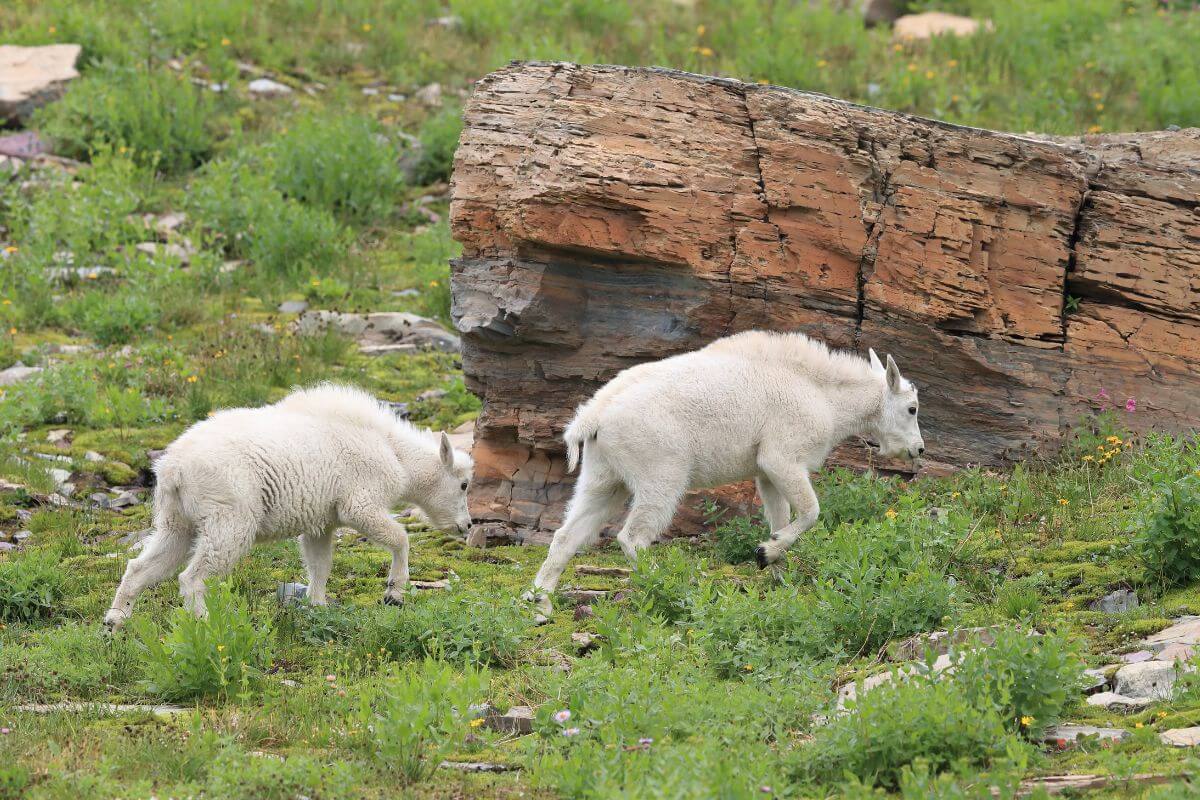
Hunting mountain goats in Montana is a challenging and thrilling adventure. It requires skill, preparation, and a deep respect for both the animals and the environment. This guide provides essential insights for those seeking this demanding but rewarding pursuit.
Montana Mountain Goat Hunting License
Montana has a stable population of mountain goats, making it ideal for self-guided hunts. The state’s mountain goat units offer great hunting opportunities, typically requiring a backpack or a horseback-type hunt. Most units have the potential for an above-average goat with 9″ horns or more.
To hunt a mountain goat in Montana, you need specific hunting licenses. The Mountain Goat License is available through a special drawing and requires applicants to hold Conservation and Base Hunting licenses. If you’re lucky enough to get a mountain goat license, you can only apply for another one after 7 years.
Here are some key details about the Mountain Goat License for residents and non-residents:
| Type | Fee | Application Fee | Availability | Application Deadline |
|---|---|---|---|---|
| Resident | $125 | $10 | Special Drawing | May 1 |
| Nonresident | $1,250 | $50 | Special Drawing | May 1 |
Drawing for these licenses typically happens mid-May for special draws and early July for SuperTag opportunities. For the 2024 hunting season, the dates are as follows:
| Mountain Goat Season | Dates |
|---|---|
| Archery | Sept. 7 – Sept. 14 |
| General | Sept. 15 – Dec. 01 |
Tips for Hunting Montana Mountain Goats
Just like hunting other animals in Montana, preparation is key. Besides having the right license, it’s important to learn about proper hunting techniques for elk. Remember to show respect for these majestic creatures and the other wildlife sharing their habitat.
A few reminders for mountain goat hunters in Montana:
- In certain regions, it’s illegal to hunt female mountain goats with kids.
- Hunters must present the head or skull of the harvested goat to an FWP official within 10 days.
- Correctly identifying adult male goats in the field is crucial to avoiding over-harvesting and contributing to herd sustainability.
Here’s a checklist to help determine the sex of a mountain goat:
- Solitary or Small Group – Although young goats are usually seen with adult females, any goat, regardless of age or gender, may sometimes be alone. Therefore, it is important to observe the goat carefully to determine its status.
- Urination Posture – Watch for urination posture. Male mountain goats stretch forward with front legs, while females squat.
- Dirty Flanks – Male mountain goats often have dirt on their lower body from urination pits.
- Facial Features and Beard – Male mountain goats have more pronounced beard development.
- Body Size and Configuration – Adult male mountain goats are larger and more muscular.
- Horn Characteristics – Male mountain goats have larger, more curved horns.
By understanding these characteristics and following the hunting regulations, hunters can contribute to the conservation of mountain goats in Montana.
Montana Mountain Goat Hunting Outfitters
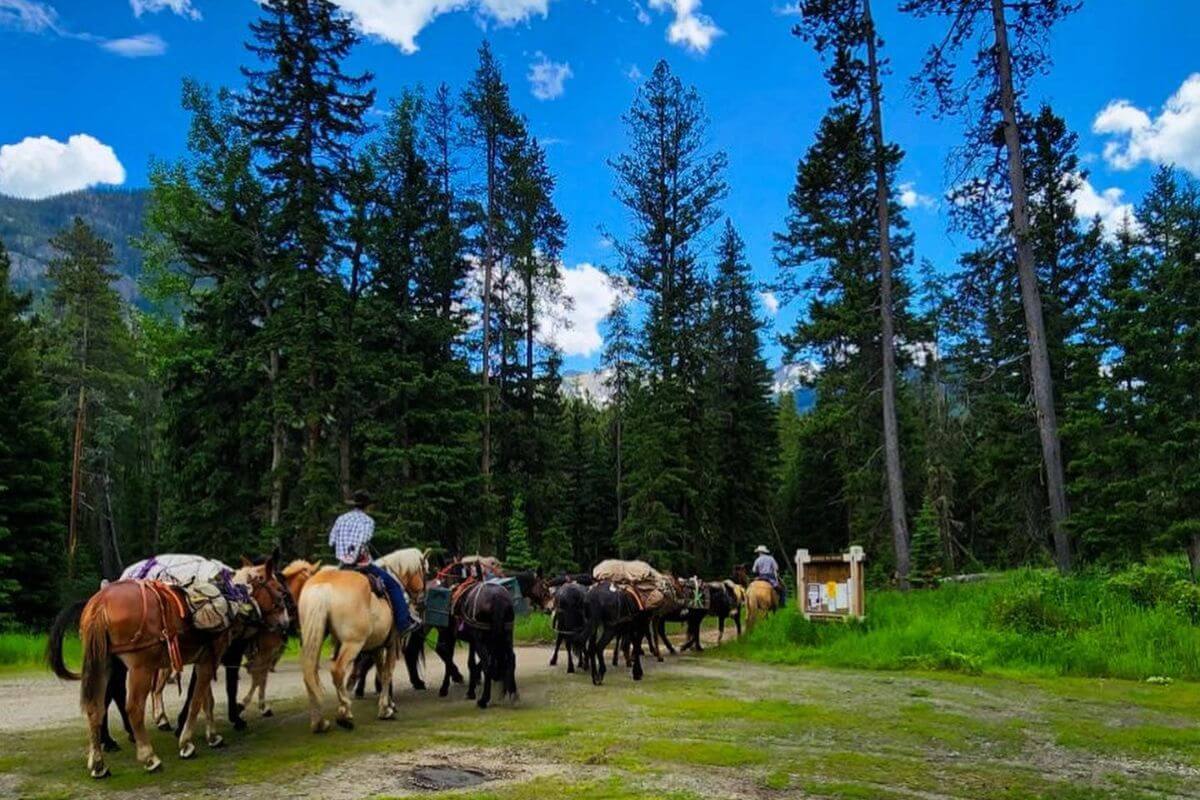
Looking for the best Montana mountain goat hunting outfitters? You’re in the right spot. These outfitters offer thrilling hunting experiences and a high chance of success.
Let’s dive into what makes these Montana mountain goat outfitters stand out:
- Absaroka-Beartooth Outfitters – Absaroka-Beartooth Outfitters leads mountain goat hunts in two prime areas known for their high draw success rates. Exploring the remote, high-elevation hunt locations in the heart of the Absaroka-Beartooth Wilderness is an adventure like no other. You can even use horseback to hunt in these areas.
- Montana Llama Guides – Montana Llama Guides’ hunting area is a goat’s dreamland, with an alpine camp at the treeline surrounded by towering peaks and alpine lakes. Over 50 peaks above 10,000 feet are the landscape where mountain goats are said to dance on craggy ridges.
- Hell’s A-Roarin’ Outfitters – If you’re ready for a draw for goat chance and aiming for a nice one, Hell’s A-Roarin’ Outfitters’ hunts from October to mid-November are perfect. The goat country where they roam is excellent. With the tag application by May 1, you could be on your way to a remarkable hunting experience.
Each outfitter offers a unique experience, from high draw success rates to breathtaking alpine landscapes where mountain goats thrive. Whether you’re looking for a specific draw period or a certain terrain, these outfitters have you covered.
Montana Mountain Goat Final Thoughts
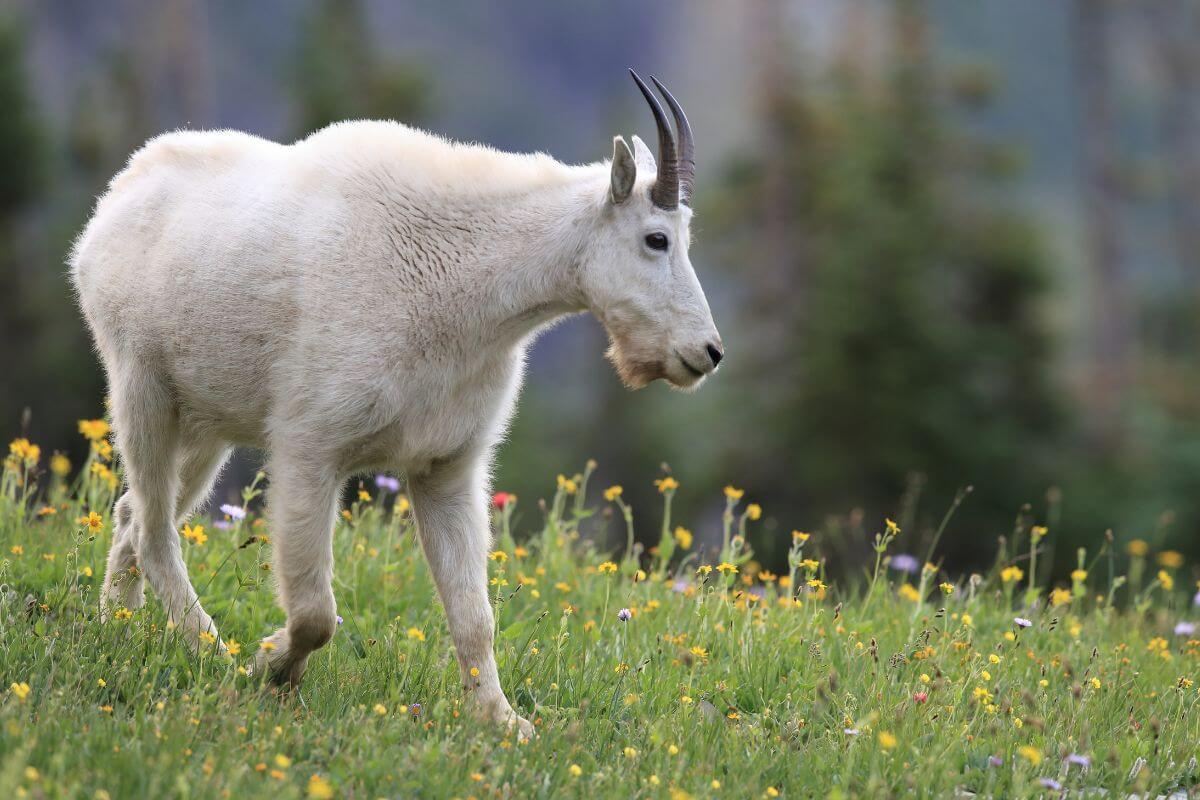
Encountering a Montana mountain goat is a privilege that comes with responsibilities, whether you’re watching or hunting. These unique creatures symbolize the state’s wild beauty with their exclusive and adaptable nature.
Remember, when observing, keep your distance and avoid feeding them. For hunters, effective hunt planning is crucial for conservation. It involves proper licensing and compliance with regulations.
Each experience connects to the heart of Montana’s natural landscapes, from backcountry hunts to mountain wildlife watching. Let’s ensure we appreciate and protect the legacy of Montana’s mountain goats for future generations.
Montana Mountain Goat Guide FAQs
1. Are There Mountain Goats in Montana?
There are mountain goats in Montana. Mountain goats are native to the Rocky Mountains region, including parts of Montana. They inhabit rugged mountainous terrain, particularly in areas with steep cliffs and rocky slopes.
2. How Much Is a Montana Mountain Goat Tag?
A mountain goat tag costs $125 for residents and $1,250 for non-residents in Montana. This tag allows hunters to pursue mountain goats in designated hunting areas within the state, subject to regulations and quotas set by the Montana Fish, Wildlife & Parks Department.
3. How Big Are Mountain Goats in Montana?
Mountain goats in Montana typically weigh between 100 to 300 pounds (45 to 136 kilograms), with males, known as billies, generally larger than females, known as nannies. Male adult goats can stand around 3 to 3.5 feet (0.9 to 1.1 meters) tall at the shoulder and may have impressive curved horns measuring up to 12 inches (30 centimeters).
4. Are Mountain Goats Rare?
Mountain goats are not considered rare in the sense of being endangered or critically threatened. However, their distribution is limited to rugged, mountainous habitats, and they may not be as abundant or widespread as some other wildlife species.
5. What Is Special About Mountain Goats?
Mountain goats are known for their exceptional climbing abilities, allowing them to navigate steep cliffs and rocky terrain easily. Their specialized hooves and unique social behaviors make them well-adapted to their rugged alpine habitats. Additionally, their thick coats and adaptability to harsh conditions enable them to thrive in high-elevation environments.
Read about what makes Montana a great state through these articles:
- Montana’s Mountain Horse
- Facts About Montana Mountain Lions
- About the Montana Lynx
- Learn About Montana’s Invasive Species
- https://fwp.mt.gov/conservation/wildlife-management/mountain-goat
- https://fwp.mt.gov/hunt/regulations/mountain-goat
- https://fieldguide.mt.gov/speciesDetail.aspx?elcode=AMALE02010
- https://www.nps.gov/yell/learn/nature/mountain-goat.htm
- https://www.facebook.com/photo.php?fbid=113727775119031&set=pb.100094454271743.-2207520000&type=3

